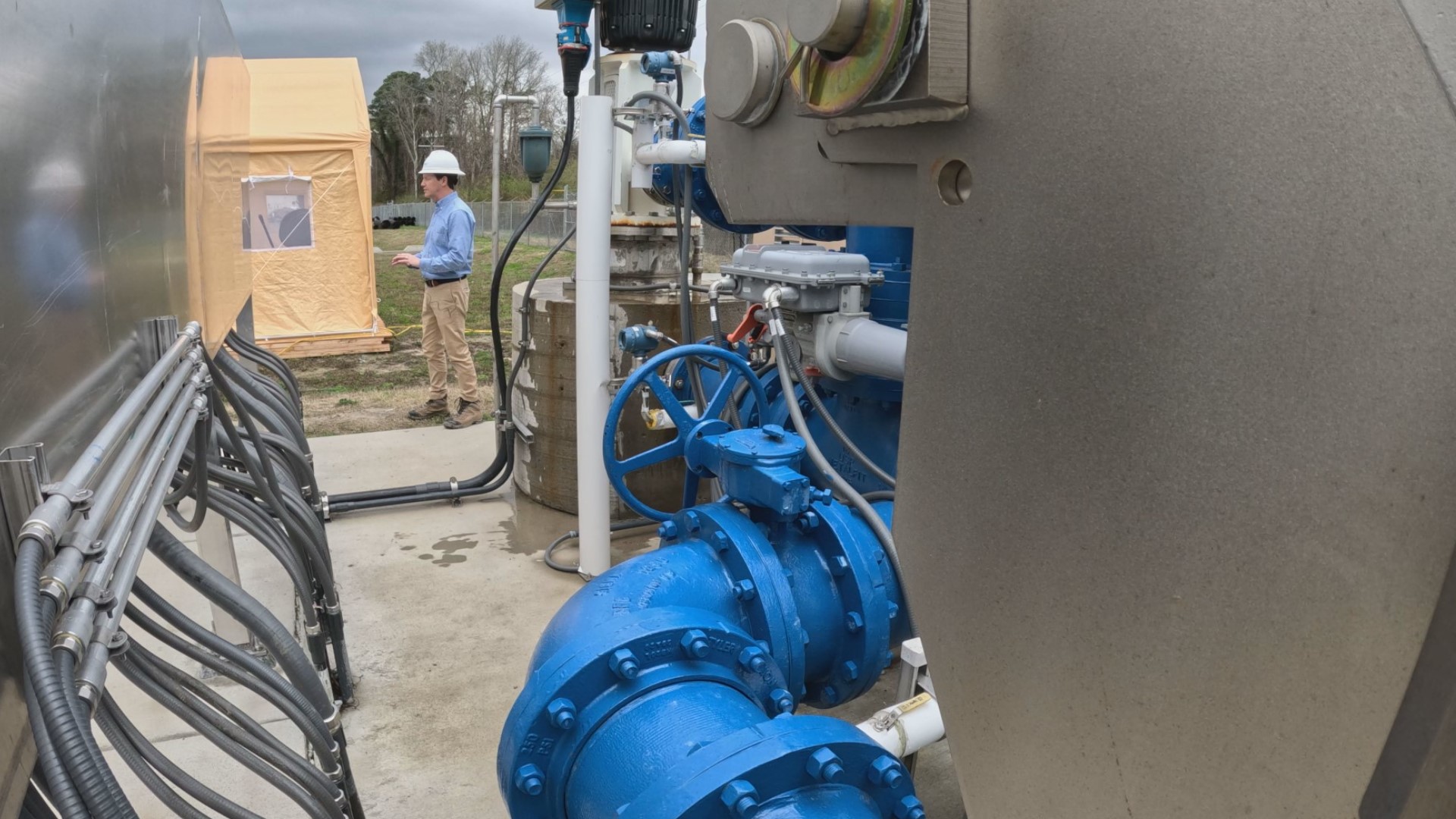SUFFOLK, Va. — A $25 million water treatment facility nestled beside the James River could set the foundation for long-term and gradual resistance to sea level rise in Coastal Virginia.
At the Hampton Roads Sanitation District's Nansemond water treatment facility, Dan Holloway has made a career as a hydrogeologist, who is now tasked to oversee the difference that can be made by diverting a small percentage of treated wastewater back underground instead of out to a body of water.
“Think of it like a tire losing pressure, and we’re pumping it back up," Holloway said.
What is the Potomac Aquifer?
The "tire" Holloway is referring to is a layer of underground water called the Potomac Aquifer, which sees a daily extraction of 155 million gallons of water between businesses and residences in eastern Virginia. The more water extracted from the aquifer, the more it condenses and compacts. That shrinking effect can cause the land above to fall lower, or "subside."
Subsidence is a topic getting more regional recognition following recent Virginia Tech research now getting national recognition.
The report, Slowly but surely: Exposure of communities and infrastructure to subsidence on the US east coast, was published by the National Academy of Sciences of the United States in early January, highlighting the rate of subsidence land masses across the East Coast are experiencing yearly.
"We utilized measurements of vertical land motion rates obtained from analysis of radar datasets to evaluate the subsidence-hazard exposure to population, assets, and infrastructure systems/facilities along the US east coast," begins the study.
The researchers, including Patrick L. Barnard with the United States Geological Survey, Virginia Tech Associate Professor Manoochehr Shirzaei and lead author Leonard Ohenhen, a graduate student, compiled evidence-based data to demonstrate the subsidence rate for counties and cities along the East Coast. The Hampton Roads region of Virginia is one of few metro areas with an approximate subsidence rate of 2 millimeters per year.
The report found:
"...only 6 to 32 counties have a high percent area (>60%) exposed to land subsidence for the different subsidence hazard severity (subsidence rates >0 mm per year to >2 mm per year). These counties include some major metropolitan areas on the US east coast, including Hampton (VA), Norfolk (VA), Virginia Beach (VA), Chesapeake (VA), Baltimore City, (MD), Union (NJ), Middlesex (NJ), Monmouth (NJ), Ocean (NJ), New Haven (CT), and several counties in New York City (Queens, Bronx, Nassau, and Westchester..."
"I think as the whole sea level rise, relative and increased flooding, it really becomes apparent. Even if we’re talking millimeters, when we’re flat every millimeter counts. It becomes more real," Holloway said.
According to HRSD, the aquifer's groundwater withdrawal contributes to an estimated 25% of the sinking land in eastern Virginia.
How SWIFT program is putting water back into the aquifer
Currently, HRSD's SWIFT program is experimenting with the impact one million gallons of water per day could make on slowing down the rate the Potomac Aquifer shrinks.
While the amount that's recharged into the aquifer still falls well under the daily withdrawal rate, HRSD has so far injected 831 million gallons of water back underground, closing in on a billion.
The current SWIFT facility in Suffolk will at full scale be able to pump 34 million gallons of water per day underground. In Newport News, next to Menchville High School, SWIFT technology is being upgraded to the James River Wastewater Treatment Plant to add 16 million gallons of water as well.
Holloway said this current level of progress — considered "demonstration" size before it's built out to full scale — has so far shown even that amount can make a small difference.
“It's sub-millimeter, tenths of a foot of movement so not hiding anything, it’s slight. But we have evidence since the time we started in 2018, slight movements have caused a positive expansion. When we pump it doesn’t get as low as it does in 2018," Holloway said.

